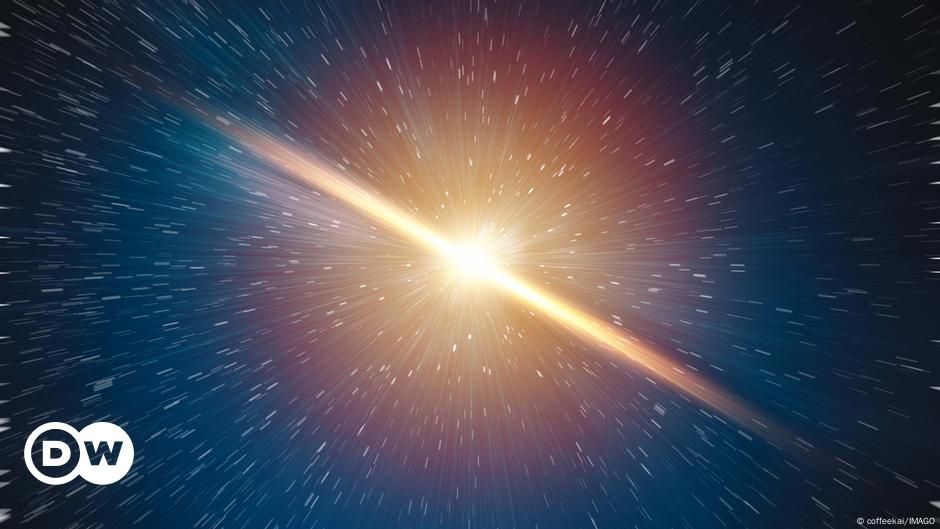Astrophysicists question the Big Bang and leave a huge hole in their inflationary theory | Science and Ecology | Dr..

An international team of astrophysicists says there is a clear and unmistakable signal in the universe that inflation – the exponential expansion theory of space in the early universe – could be ruled out as a possibility, suggesting that our understanding of the origins of our universe may need some updates.
In his article, Published in the magazine Astrophysical Journal Letters, European astrophysicist Sunny Fagnozzi, of the University of Trento and the University of Cambridge, argues with Israeli-American researcher Avi Loeb, of Harvard University, that this signal – known as the cosmic graphiton background (CGB) – can be detected, although it would be a major technical and scientific challenge .
“Big Bounce” instead of Big Bang
Eliminating inflation, according to the researchers, could mean that the universe could have started with the “Big Bounce” rather than the Big Bang. In other words, the universe could have been born after the end of an earlier cosmic phase – a revival – and not as a result of exponentially inflating space-time into existence.
“The inflation theory was developed to explain the various tuning problems of the so-called hot Big Bang model,” Explains Vagnozzi, first author of the article. “It also explains the origin of the structure in our universe as a result of quantum fluctuations,” he added.
But, Vagnozzi argues, there is still a chance to prove the theory wrong, despite being able to rule out “individual inflationary models”.
“The great flexibility shown by potential models of cosmic inflation, covering an infinite panorama of cosmological outcomes, raises the fear that cosmic inflation is not falsifiable, even if individual inflationary models can be ruled out. Is it possible, in principle, to be put to the test of cosmic inflation? Independently of form?” asks Vagnozzi.
Confirmation of cosmic inflation?
According to the Cambridge University press release, some scientists raised concerns about cosmic inflation in 2013, when the Planck satellite published its first measurements of the cosmic microwave background (CMB), the oldest light in the universe.
“When the Planck satellite results were announced, they were presented as confirmation of cosmic inflation,” Harvard astronomer Avi Loeb, who also worked on the paper, said in the statement. “But some of us would argue that the results may show just the opposite,” he added.
Studying the universe moments after the big bang
But until we see the universe as it was after the supposed Big Bang, we won’t know for sure.
“The true edge of the visible universe is the distance that any signal can travel at the finite speed of light in the 13.8 billion years since the universe was born,” Loeb said. “As a result of the expansion of the universe, this edge is currently 46.5 billion light-years away,” he added.
He added, “The spherical size within these boundaries is like an archaeological crater centered around us: the deeper we go into it, the earlier we discover the layer of cosmic history, all the way to the Big Bang that is our last horizon.” “What lies beyond the horizon is unknown.”
In short, we have to delve into the nature of the universe right after its creation. But even if we did get a glimpse of it, we’d have a hard time predicting what came before. “A proper understanding of what came before requires a predictive theory of quantum gravity, which we don’t have,” Loeb said.
Neutrinos are almost weightless particles
Despite the difficulties, this reality has not deterred researchers, who believe it may be possible to delve deeper into the early universe by studying nearly weightless particles known as neutrinos, the most massively abundant in the universe.
This is because the universe allows neutrinos to travel freely without scattering about a second after the Big Bang, when the temperature was ten billion degrees, according to the statement. “The current universe must be full of fan-like neutrinos from that time,” Vagnozzi said.
Discovering the CGB and ruling out the Big Bang theory altogether?
However, Vagnozzi and Loeb say we can go back even further in time by tracking gravitons, which are free-traveling hypothetical elementary particles that can explain gravitational interactions.
So the researchers suggest that the cosmic graviton background, or CGB, could be around the creation of the universe. According to the Big Bang theory, CGB could not exist, because it would have been attenuated – due to the exponential inflation of the universe – to the point that it was no longer detectable.
Therefore, if researchers discover it, they can rule out the Big Bang theory altogether.
However, the discovery of the CGB required a very complex technology of superconducting gyroscopes and magnets that did not yet exist. However, according to the researchers, this signal may come in handy in the future.
Edited by Felipe Espinosa Wang.

“Evil coffee nerd. Analyst. Incurable bacon practitioner. Total twitter fan. Typical food aficionado.”

:quality(70):focal(288x128:298x138)/cloudfront-us-east-1.images.arcpublishing.com/metroworldnews/4VWFN4IMGFGQTCCSYSVPIJDM4A.jpg)









